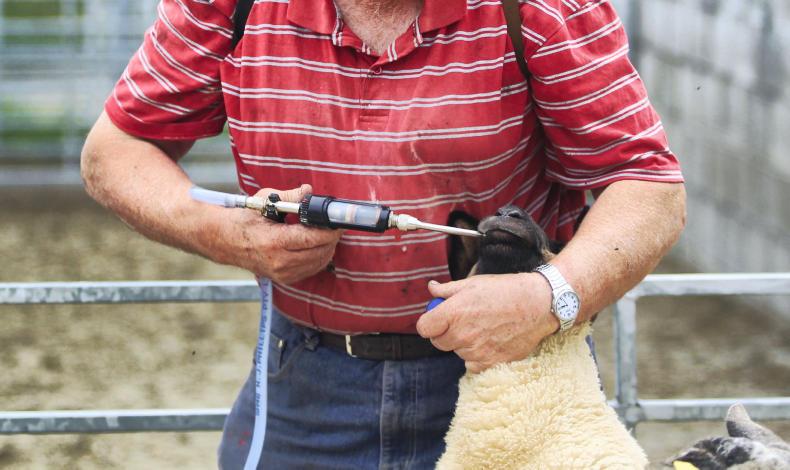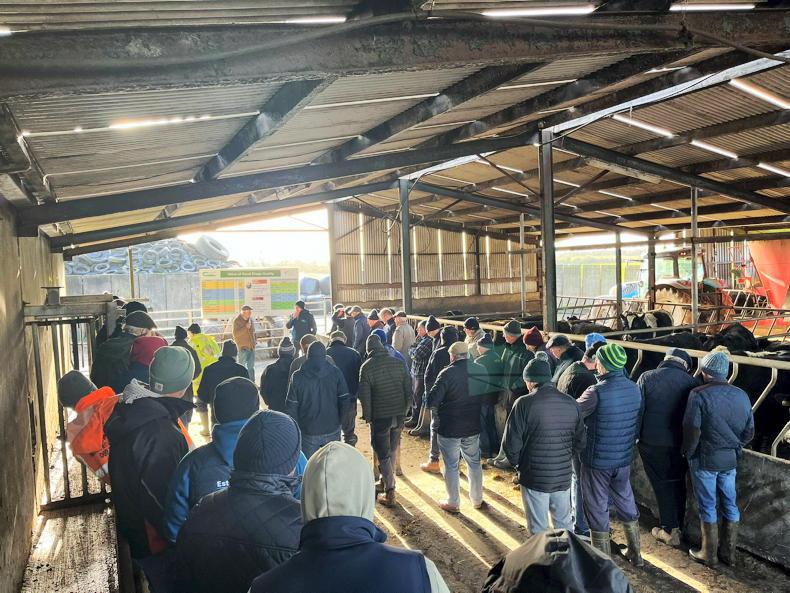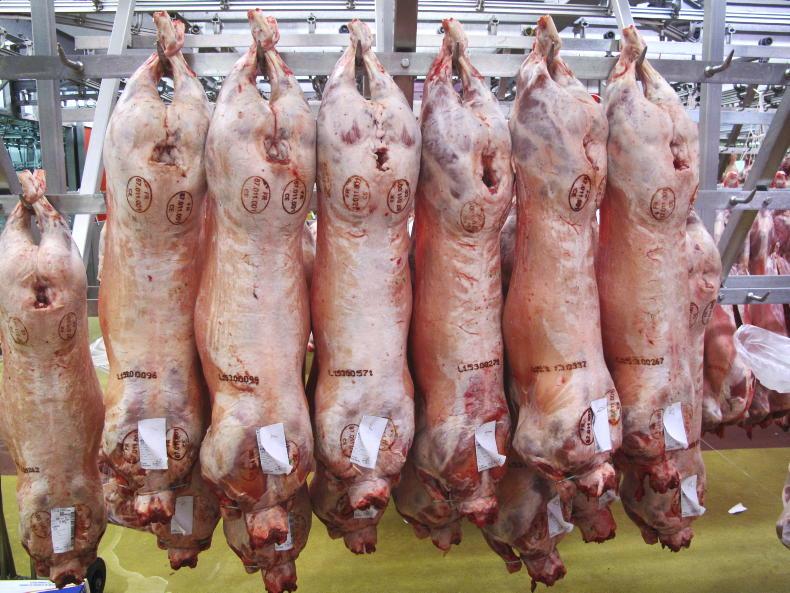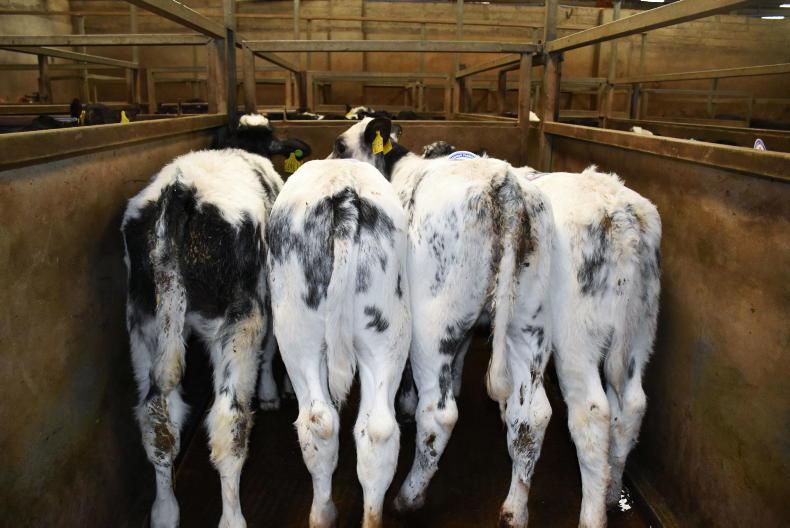Sheep farmers should not be overly reliant on one type of wormer, as it can lead to a build-up of resistant parasites in flocks.
Instead, different wormers should be alternated between treatments, so that parasites that are resistant to one type of anthelmintic are more likely be cleaned out in the next treatment.
A common pitfall is changing to a wormer with a different product name, but the same active ingredient. This is not effective for stopping anthelmintic resistance developing on farms.
Wormers are categorised into five colour coded groups, based on their active ingredient. However, it is not always clear from the packaging which active ingredient and wormer group a product belongs to.
Common products
An overview of common wormer products currently available from vets and agricultural merchants in NI is outlined in Table 1.
It shows that several common wormers have the same active ingredient, so alternating between these products alone will not help avoid anthelmintic resistance.
As Table 1 indicates, some groups are made up of products with different active ingredients. For example, group three (clear) is made up of ivermectin, doramectin and moxidectin-based products.
While there may be some scope to alternate between different active ingredients within the same group, it is generally not recommended.
This is because all active ingredients within a group are closely related to one another, and so worms that are resistant to one active ingredient could be resistant to all products within the group.
New products
Group four (orange) and group five (purple) wormers Zolvix and Startect Dual Active are relatively new and there have been few reports of resistance issues with these products so far.
However, Startect is not available in stores, so Zolvix is recommended as the main quarantine treatment. The aim of quarantine is to stop newly bought-in sheep from bringing in worms that are resistant to other anthelmintic groups.
Zolvix is also recommended as a late season treatment in lambs, to wipe out any resistant worms that have built up over the season.
Farmers are advised to only use combination products when necessary, as dosing for parasites that are low in number can lead to resistance issues
Other wormers that are not included in Table 1 include combination products, which typically target roundworm, lungworm and fluke.
This includes Levafas Diamond, which is a combination of the group two (yellow) active ingredient and oxyclozanide for fluke control.
Likewise, Supaverm and Closamectin are group one (white) and group three (clear) wormers respectively, and both contain closantel for fluke.
Farmers are advised to only use combination products when necessary, as dosing for parasites that are low in number can lead to resistance issues.
Egg counts
The same principle applies to narrow spectrum wormers in the main anthelmintic groups, as animals should only be treated if they have a worm burden. This can be established by collecting fresh dung samples and getting faecal egg counts (FEC) carried out.
Reports from local vets indicate that more sheep farmers have been using FEC in recent years, but it remains a less common practice for parasite control in cattle.
Worm control is ultimately a complex topic
Post-treatment FEC are also recommended, to check if the wormer has worked or if there are resistance issues. This should be done seven days after using group two (yellow) wormers and 14 days after for products containing other active ingredients.
Worm control is ultimately a complex topic and the best approach is to get advice from a vet or other suitably qualified person in an agricultural merchant store.
Ideally, they need to know about previous treatments, FEC results and any resistance issues on the farm.
Read more
Sheep farmers urged to faecal egg count
Lamb health during summer
Sheep farmers should not be overly reliant on one type of wormer, as it can lead to a build-up of resistant parasites in flocks.
Instead, different wormers should be alternated between treatments, so that parasites that are resistant to one type of anthelmintic are more likely be cleaned out in the next treatment.
A common pitfall is changing to a wormer with a different product name, but the same active ingredient. This is not effective for stopping anthelmintic resistance developing on farms.
Wormers are categorised into five colour coded groups, based on their active ingredient. However, it is not always clear from the packaging which active ingredient and wormer group a product belongs to.
Common products
An overview of common wormer products currently available from vets and agricultural merchants in NI is outlined in Table 1.
It shows that several common wormers have the same active ingredient, so alternating between these products alone will not help avoid anthelmintic resistance.
As Table 1 indicates, some groups are made up of products with different active ingredients. For example, group three (clear) is made up of ivermectin, doramectin and moxidectin-based products.
While there may be some scope to alternate between different active ingredients within the same group, it is generally not recommended.
This is because all active ingredients within a group are closely related to one another, and so worms that are resistant to one active ingredient could be resistant to all products within the group.
New products
Group four (orange) and group five (purple) wormers Zolvix and Startect Dual Active are relatively new and there have been few reports of resistance issues with these products so far.
However, Startect is not available in stores, so Zolvix is recommended as the main quarantine treatment. The aim of quarantine is to stop newly bought-in sheep from bringing in worms that are resistant to other anthelmintic groups.
Zolvix is also recommended as a late season treatment in lambs, to wipe out any resistant worms that have built up over the season.
Farmers are advised to only use combination products when necessary, as dosing for parasites that are low in number can lead to resistance issues
Other wormers that are not included in Table 1 include combination products, which typically target roundworm, lungworm and fluke.
This includes Levafas Diamond, which is a combination of the group two (yellow) active ingredient and oxyclozanide for fluke control.
Likewise, Supaverm and Closamectin are group one (white) and group three (clear) wormers respectively, and both contain closantel for fluke.
Farmers are advised to only use combination products when necessary, as dosing for parasites that are low in number can lead to resistance issues.
Egg counts
The same principle applies to narrow spectrum wormers in the main anthelmintic groups, as animals should only be treated if they have a worm burden. This can be established by collecting fresh dung samples and getting faecal egg counts (FEC) carried out.
Reports from local vets indicate that more sheep farmers have been using FEC in recent years, but it remains a less common practice for parasite control in cattle.
Worm control is ultimately a complex topic
Post-treatment FEC are also recommended, to check if the wormer has worked or if there are resistance issues. This should be done seven days after using group two (yellow) wormers and 14 days after for products containing other active ingredients.
Worm control is ultimately a complex topic and the best approach is to get advice from a vet or other suitably qualified person in an agricultural merchant store.
Ideally, they need to know about previous treatments, FEC results and any resistance issues on the farm.
Read more
Sheep farmers urged to faecal egg count
Lamb health during summer










SHARING OPTIONS